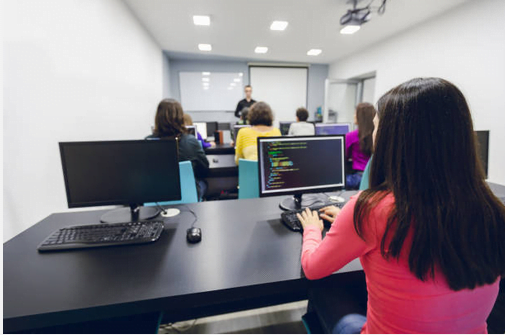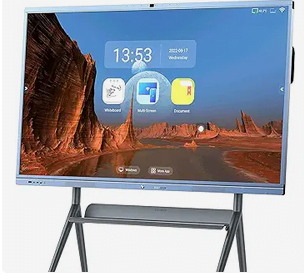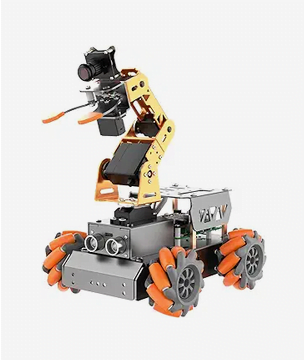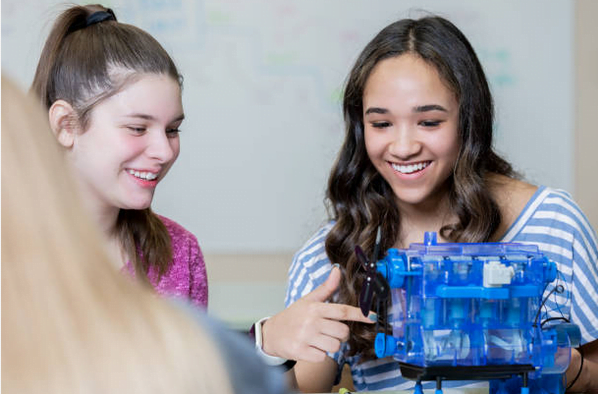Top Tech-Enhanced Classroom Gear Trends of 2024: Revolutionizing Education

Introduction
In 2024, the classroom is evolving faster than ever, thanks to a surge of innovative technology that is reshaping how we teach and learn. From interactive displays to AI-powered tools, tech-enhanced classroom gear is making education more engaging and effective. In this blog, we’ll explore the top trends in classroom technology for 2024 and how they are revolutionizing the educational experience. We’ll also provide insights into how these technologies work and their benefits for both educators and students.
Interactive whiteboards are rapidly becoming a staple in modern classrooms. These digital boards allow teachers to display lessons, collaborate with students, and integrate multimedia resources seamlessly.

Benefits:
- Enhanced Engagement: Interactive elements capture students’ attention and facilitate active learning.
- Versatility: Can be used for presentations, group work, and real-time feedback.
2. Augmented Reality (AR) Learning Tools
Augmented Reality (AR) is transforming the way students interact with educational content. AR overlays digital information on the physical world, creating immersive learning experiences.


Key Features:
- 3D Visualizations: Brings complex concepts to life with interactive 3D models.
- Real-Time Interaction: Students can interact with virtual objects as if they were physical.
Benefits:
- Enhanced Understanding: Helps students grasp difficult subjects through visualization and interaction.
- Increased Motivation: Engages students with interactive and fun learning methods.
3. AI-Powered Tutoring Systems
Artificial Intelligence (AI) is making personalized learning more accessible through AI-powered tutoring systems. These tools adapt to individual student needs and provide customized support.

Key Features:
- Personalized Learning Paths: Tailors lessons and exercises based on student performance.
- Instant Feedback: Offers real-time assistance and corrections.
Benefits:
- Improved Learning Outcomes: Addresses specific learning gaps and needs.
- 24/7 Availability: Provides support beyond traditional classroom hours.

4. Smart Classroom Management Systems
Smart classroom management systems are designed to streamline administrative tasks and enhance classroom organization. These systems integrate with various tech tools to simplify lesson planning and student management.
Key Features:
- Automated Attendance: Tracks student attendance automatically.
- Lesson Planning Integration: Syncs with digital lesson plans and educational resources.
Benefits:
- Efficiency: Reduces time spent on administrative tasks, allowing more focus on teaching.
- Enhanced Communication: Facilitates better communication between teachers, students, and parents.

5. Advanced Student Response Systems
Student response systems, or clickers, are evolving with advanced features that make gathering student feedback and assessing understanding more effective.

Key Features:
- Real-Time Polling: Collects responses instantly during lessons.
- Data Analysis: Provides detailed insights into student comprehension.
Benefits:
- Immediate Assessment: Allows teachers to gauge student understanding and adjust instruction accordingly.
- Interactive Learning: Encourages active participation and engagement.

Wearable technology is making its way into the classroom, offering new ways to track and enhance student performance and well-being.
Key Features:
- Activity Tracking: Monitors physical activity and health metrics.
- Engagement Monitoring: Tracks attention levels and classroom participation.
Benefits:
- Personalized Insights: Provides data that can be used to tailor learning experiences.
- Health and Wellness: Encourages healthy habits and monitors physical well-being.

7. High-Definition Document Cameras
Document cameras are becoming more advanced, with high-definition capabilities that make it easier to display and annotate documents and objects in the classroom.
Key Features:
- HD Resolution: Provides clear and detailed images of documents and objects.
- Live Annotation: Allows teachers to draw or highlight directly on the display.
Benefits:
- Enhanced Clarity: Improves visibility and understanding of displayed materials.
- Interactive Lessons: Facilitates real-time interaction with teaching materials.

8. Virtual Reality (VR) Learning Environments
Virtual Reality (VR) is creating immersive learning environments that transport students to different places and times, offering unique educational experiences.
Key Features:
- Immersive Simulations: Provides realistic simulations of historical events, scientific phenomena, and more.
- Interactive Learning: Engages students in hands-on experiences within virtual environments.
Benefits:
- Enhanced Engagement: Captivates students with interactive and immersive learning experiences.
- Expanded Horizons: Offers experiences that would be impossible or impractical in the real world.

9. Cloud-Based Collaboration Tools
Cloud-based collaboration tools are essential for modern classrooms, enabling students and teachers to work together on projects and assignments from anywhere.
Key Features:
- Real-Time Collaboration: Allows multiple users to work on documents simultaneously.
- Easy Access: Provides access to files and resources from any device with an internet connection.
Benefits:
- Increased Flexibility: Supports remote and hybrid learning environments.
- Improved Teamwork: Facilitates group work and collaborative projects.

10. Sustainable Tech Solutions
Sustainability is becoming a key consideration in classroom technology. Eco-friendly tech solutions are designed to reduce environmental impact while maintaining high performance.
Key Features:
- Energy Efficiency: Uses less power and reduces carbon footprint.
- Recyclable Materials: Made from materials that are easier to recycle and less harmful to the environment.
Benefits:
- Environmental Impact: Supports green initiatives and reduces waste.
- Cost Savings: Often leads to long-term savings on energy and maintenance.

The Role of Parents and Guardians in Supporting Tech-Enhanced Learning
As classrooms become more tech-driven, the role of parents and guardians in supporting their children’s education is evolving. While teachers guide students during school hours, parents play a crucial role in reinforcing tech-enhanced learning at home. This partnership between educators and families is essential to maximize the benefits of technology in education.
Key Responsibilities for Parents:
- Creating a Conducive Learning Environment: With the rise of digital learning tools, it’s important for parents to ensure that their children have a quiet, organized space at home where they can focus on their studies. This space should be free from distractions and equipped with the necessary technology, such as a reliable internet connection and up-to-date devices.

- Monitoring Screen Time: While technology is a powerful educational tool, it’s important to balance screen time with other activities. Parents should monitor the amount of time their children spend on devices and encourage breaks to prevent digital fatigue. Establishing screen-free times, especially before bed, can help maintain a healthy routine.

- Engaging with Educational Tools: Parents should familiarize themselves with the technology their children are using in school. This can involve exploring educational apps, understanding the platforms used for assignments, and even participating in online learning sessions. By engaging with these tools, parents can better support their children’s learning and troubleshoot issues that may arise.

Encouraging Safe Online Practices: Cybersecurity is a growing concern in the digital age. Parents should educate their children about safe online practices, such as not sharing personal information, recognizing phishing attempts, and understanding the importance of privacy settings. These conversations are crucial in helping children navigate the online world safely.
- Supporting Digital Literacy: Beyond just using technology, parents should encourage the development of digital literacy skills. This includes critical thinking about the information found online, understanding digital citizenship, and recognizing the impact of one’s online behavior. These skills are vital for success in a tech-driven world.
SEO Keywords: parental support in tech-enhanced learning, creating learning environments at home, monitoring screen time for students, safe online practices for kids, digital literacy for children
The Importance of Collaboration Between Schools and Tech Companies
The successful integration of technology in education relies heavily on collaboration between schools and technology companies. These partnerships ensure that educational tools are tailored to the needs of students and teachers, and that schools have access to the latest innovations.
Benefits of School-Tech Company Partnerships:
- Customized Solutions: When tech companies collaborate closely with schools, they can develop products that are specifically designed to meet the unique needs of different educational settings. This can lead to more effective tools that address real classroom challenges, whether it’s a specialized app for students with learning disabilities or an LMS tailored to a specific curriculum.
- Ongoing Support and Training: Tech companies can provide ongoing support and training for educators, ensuring that they are comfortable using new tools and can integrate them seamlessly into their teaching. This support might include workshops, webinars, and on-site training sessions.
- Feedback Loops: Schools provide valuable feedback to tech companies about the effectiveness of their products. This feedback can inform future updates and innovations, making the tools more effective and user-friendly. Regular communication between educators and developers ensures that technology evolves in ways that truly benefit students.
- Access to Cutting-Edge Technology: Partnerships with tech companies often give schools access to the latest technological advancements, sometimes even before they hit the broader market. This can be a significant advantage in keeping education at the forefront of innovation, providing students with the tools they need to succeed in a fast-changing world.
- Cost-Effective Solutions: Collaborations can also result in cost savings for schools. Tech companies may offer discounts, grant access to beta versions, or even donate equipment to schools. These cost-effective solutions help schools with limited budgets implement advanced technology without compromising quality.
SEO Keywords: collaboration between schools and tech companies, customized educational technology, tech company support for schools, feedback loops in education technology, cost-effective classroom solutions
The Global Impact of Tech-Enhanced Education
The adoption of tech-enhanced classroom gear is not just transforming education in developed countries—it’s also having a profound impact on education globally. In many parts of the world, technology is helping to bridge educational gaps, bringing quality learning experiences to students who might otherwise have limited access.
Global Benefits:
- Access to Quality Education: In remote or underserved areas, tech-enhanced education is making it possible for students to access high-quality resources that were previously out of reach. Through online platforms, students can participate in courses taught by world-class educators, access up-to-date learning materials, and engage in virtual classrooms with peers from around the world.
- Language Barriers: Language learning tools and translation technologies are helping to break down barriers, enabling students to learn in their native language or improve their proficiency in other languages. This fosters greater inclusivity and ensures that language is not an impediment to education.
- Scalable Learning Solutions: Technology allows educational initiatives to be scaled efficiently. Governments and NGOs can implement e-learning programs in rural areas, distribute digital devices loaded with educational content, and set up solar-powered classrooms. These scalable solutions are helping to improve literacy rates, provide vocational training, and empower students with skills that can lift communities out of poverty.
- Global Collaboration and Cultural Exchange: As classrooms become more connected, students from different cultures and backgrounds can collaborate on projects, share ideas, and learn from one another. This fosters a sense of global citizenship and cultural awareness, preparing students to thrive in an increasingly interconnected world.
- Disaster-Resilient Education: In areas prone to natural disasters or conflict, tech-enhanced education can provide continuity in learning. Online platforms and mobile apps ensure that students can continue their education even when physical schools are inaccessible, reducing the disruption caused by crises.
SEO Keywords: global impact of tech-enhanced education, access to quality education worldwide, breaking language barriers in education, scalable learning solutions, global classroom collaboration
Looking Ahead: The Evolution of Education in a Tech-Driven World
As we look to the future, it’s clear that the integration of technology in education is not just a passing trend—it’s the new reality. The classroom of 2024 and beyond will continue to evolve, driven by advancements in technology, changes in societal needs, and the ongoing quest to provide the best possible education for students around the world.
Key Predictions for the Future:
- Personalized Learning Journeys: The future of education will be increasingly personalized, with AI and data analytics creating customized learning pathways for each student. These personalized journeys will cater to individual strengths, interests, and learning styles, ensuring that all students can achieve their full potential.
- Lifelong Learning: As technology continues to advance, the concept of education is expanding beyond the traditional school years. Lifelong learning will become the norm, with individuals continually updating their skills and knowledge to stay relevant in a rapidly changing world. Technology will play a key role in providing accessible, flexible learning opportunities for people of all ages.
- Blended Learning Models: The future will likely see a continued blending of in-person and online learning. Blended learning models offer the best of both worlds, combining the flexibility and accessibility of digital tools with the social interaction and hands-on experiences of traditional classrooms.
- Ethical Considerations: As technology becomes more deeply integrated into education, ethical considerations will come to the forefront. Issues such as data privacy, the digital divide, and the ethical use of AI will require careful consideration by educators, policymakers, and tech developers. Ensuring that technology is used responsibly and equitably will be a key challenge in the years ahead.
- Resilience and Adaptability: The past few years have shown the importance of resilience and adaptability in education. The future of education will be shaped by the ability to respond to new challenges, whether they come from technological advancements, societal shifts, or global crises. Schools and educators will need to remain flexible, continually adapting to meet the needs of their students.
SEO Keywords: future of education technology, personalized learning journeys, lifelong learning trends, blended learning models, ethical considerations in edtech, resilience in education
Conclusion: Embracing the Future of Tech-Enhanced Education
The top tech-enhanced classroom gear trends of 2024 are just the beginning of a broader transformation in education. As we continue to explore and embrace these innovations, it’s important to remember that technology is a tool—a means to an end, not the end itself. The ultimate goal is to enhance the educational experience, making it more effective, inclusive, and engaging for all students.
Educators, students, parents, and tech developers all have a role to play in this ongoing evolution. By working together, we can ensure that the future of education is bright, filled with opportunities for learning, growth, and discovery. As we move forward, let’s embrace the possibilities that technology offers while remaining committed to the timeless values of education: curiosity, creativity, and the pursuit of knowledge.
SEO Keywords: future of tech-enhanced education, embracing educational technology, inclusive learning opportunities, role of technology in education, future classroom innovations
This continuation wraps up the blog by discussing the role of parents, global impacts, and future predictions for tech-enhanced education. It also emphasizes the importance of ethical considerations and collaboration among all stakeholders in ensuring that technology is used effectively and equitably in the classroom. The content is designed to keep the blog comprehensive, forward-looking, and SEO-optimized for readers interested in the evolution of education.

























